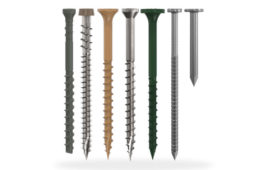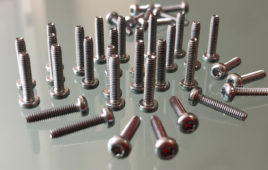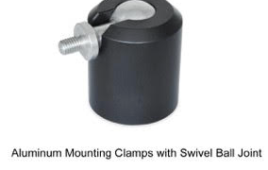By Julie Miller
Security or tamper-proof screws are, for the most part, standard screws — but with one unique feature. They are made to be inordinately difficult to remove with the typical tools. The secure design helps reduce the risk of vandalism or disassembly in several applications.

The main use of security fasteners is to stop theft and vandalism.
For example, security screws are often used to retain high-cost, portable equipment such as electronics. Additionally, they’re used for industrial infrastructure, medical and pharmaceutical facilities, corrections facilities, in the aerospace and automotive industries, and at financial institutions, government sites, and others. Even hotels might use security screws to deter guests from tampering with furnishings or fixtures and classic auto collectors commonly use them to attach license plates to valuable cars.
It is easy to identify security screws by their unique drive style. Rather than a traditional screw head that might engage a flat or Phillips screwdriver or bit, security screws have unconventional drives that correspond with specialized fastening tools.
Some examples include:
- Screws that feature a six-lobe or star drive with a central pin
- Spanner or snake eye security screws that have two drive holes
- Custom keyed screws that are designed to fit one (and only one) proprietary driver bit that’s supplied by the manufacturer
The customized screws are typically protected with additional backstops, such as serial numbers or a level of security clearance when ordering.
Another option for tamper-proof screws is one-way or irreversible screws. These can be fastened with a conventional screwdriver but cannot be removed the same way. Curves on the screw head allow the screwdriver to “grip” in the driving direction, but not in the removing direction.
However, security screws are rarely 100 percent tamper-proof (although some come close). The majority of security screws are only considered “tamper-resistant.” Although the average individual might not own Torx or spanner bits to remove security screws, the bits are fairly easy to obtain. Locking pliers, vice grips, and bolt extractor tools can sometimes be used to remove or destroy security screws.
But, in general, tamper-resistant security screws impede opportunistic breaches more so than deliberate intentions. Removal can be time-consuming, which serves as a deterrent to casual theft and vandalism. Engineers are wise to take into consideration the level of security required for each application and thoroughly evaluate the different security components available to find the best fit.
Also, pay close attention to component branding. Typically, tamper-resistant screws are relatively difficult to remove, whereas tamper-proof screws are nearly impossible to remove without the right tool.
Additionally, security nuts are available, which feature a tapered diameter, making these components resistant to most gripping devices. They are typically labeled as tri-groove, T-groove, trident drive, or cone trident drive nuts.
When selecting security screws, designers must also evaluate the long-term product or project needs. Some applications might require the option for assemblers to later remove the security screws with the corresponding drive. In such cases, labor costs should be weighed against the risks and need for tamper-resistance. Overall, consider the security level and strength level required for the application, whether the screw must be removed in the future, and the final appearance of the fastener and product.





Tell Us What You Think!